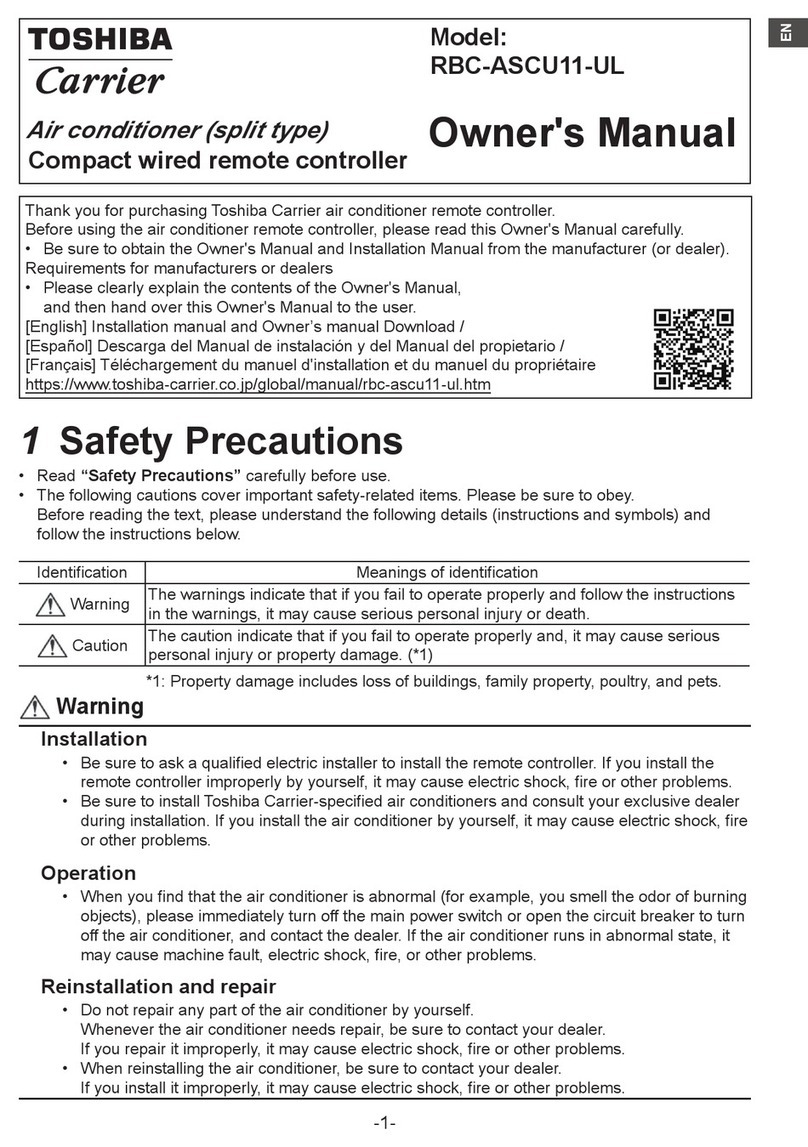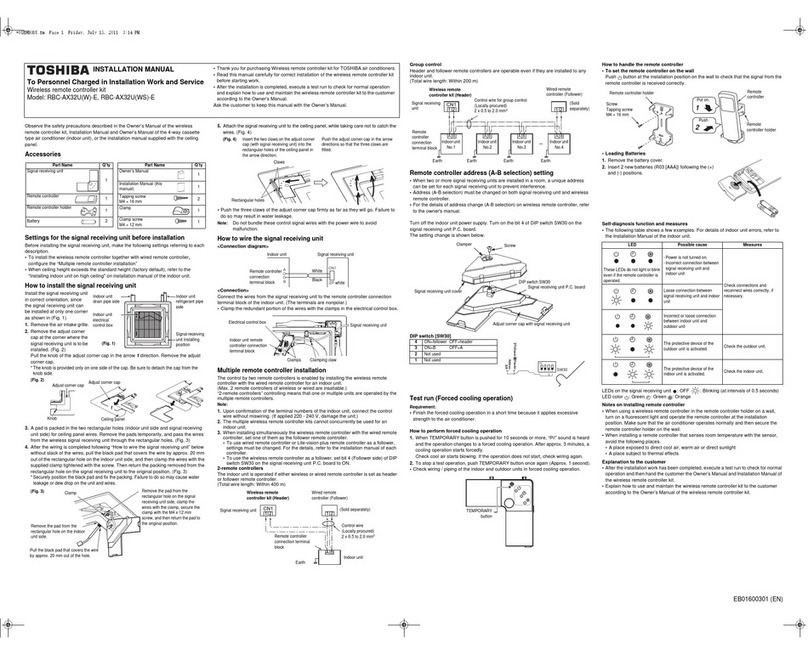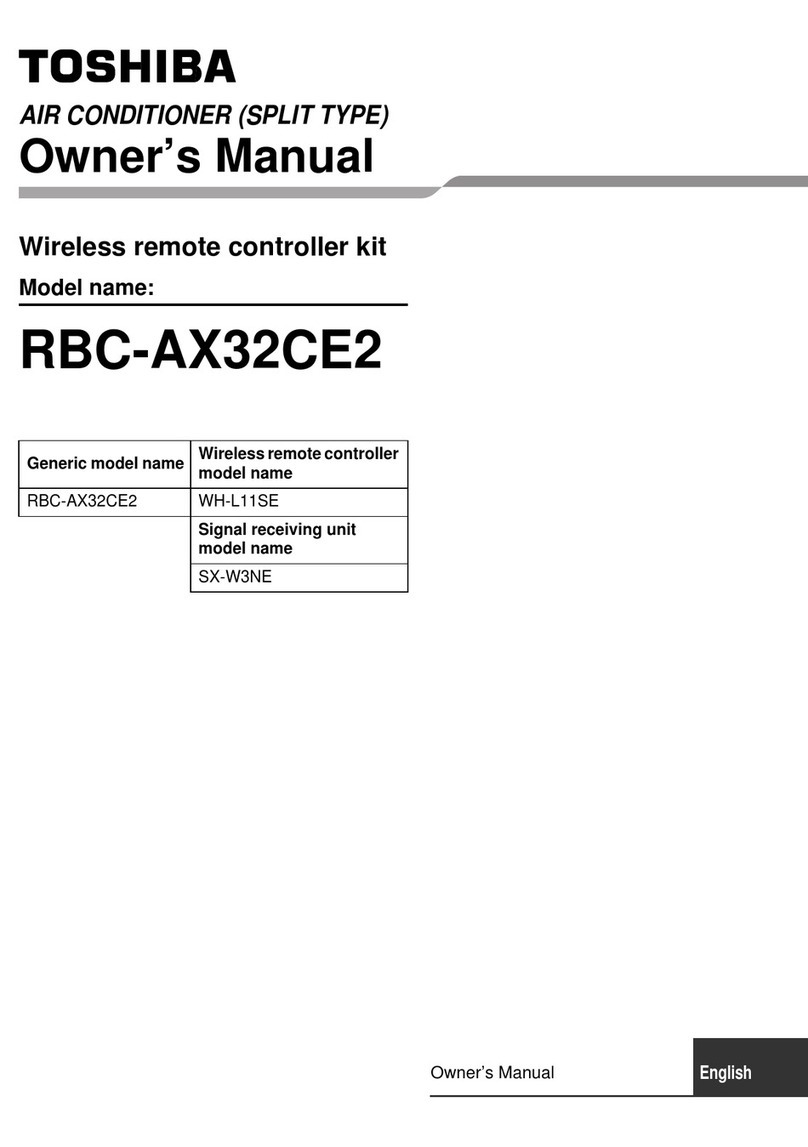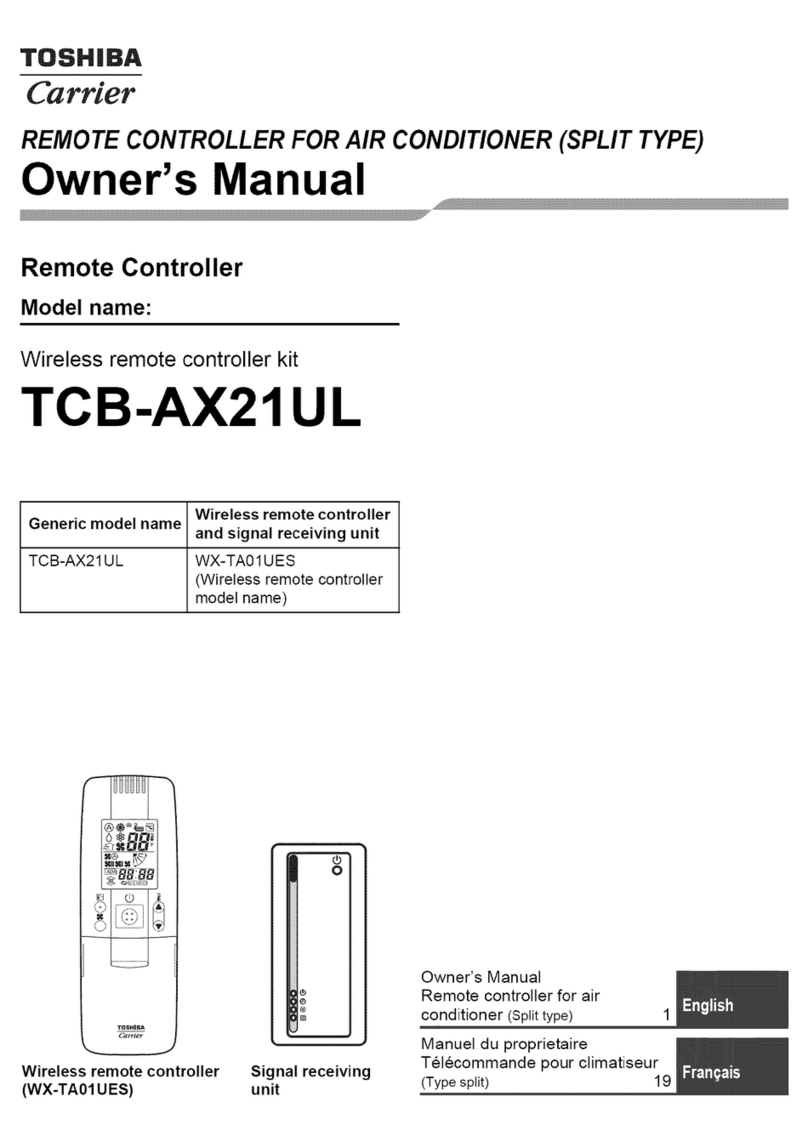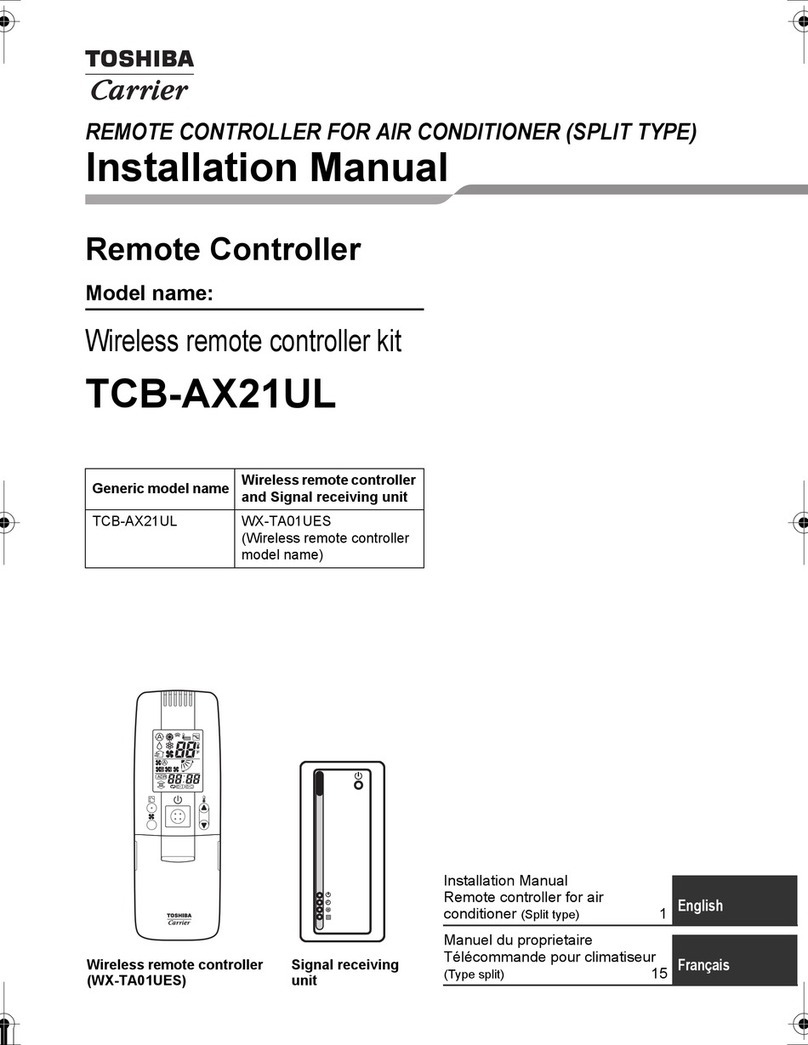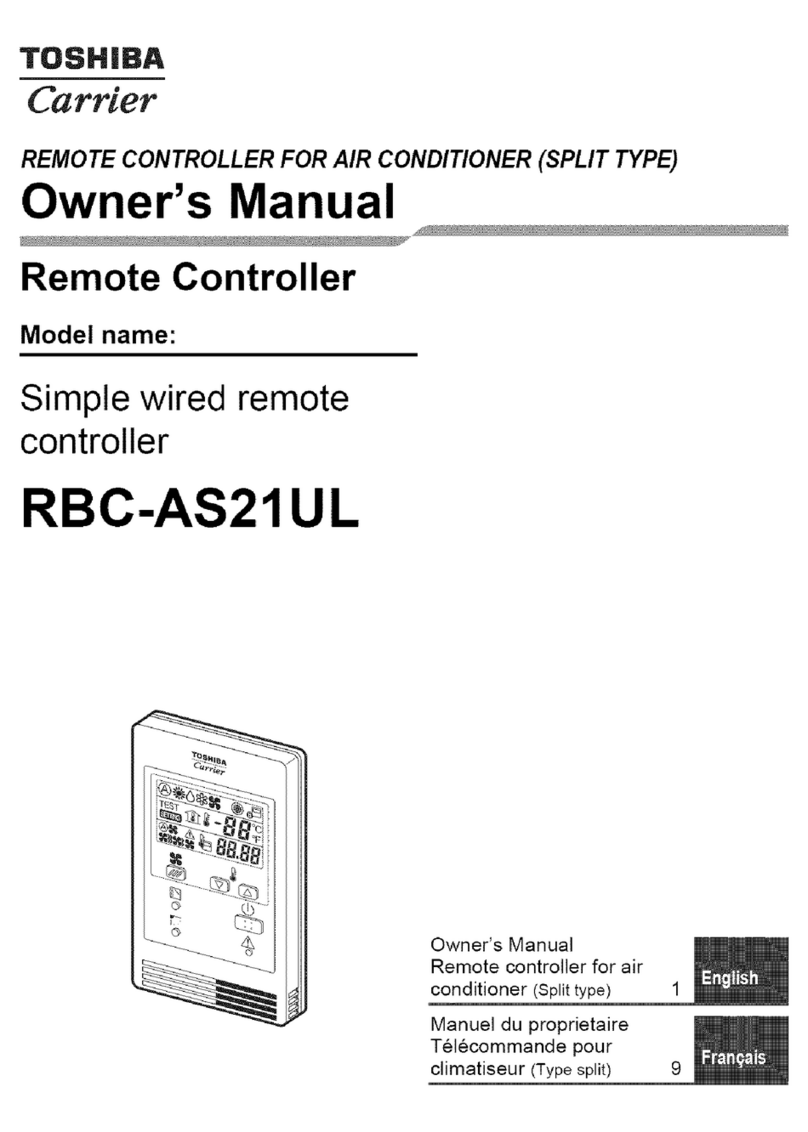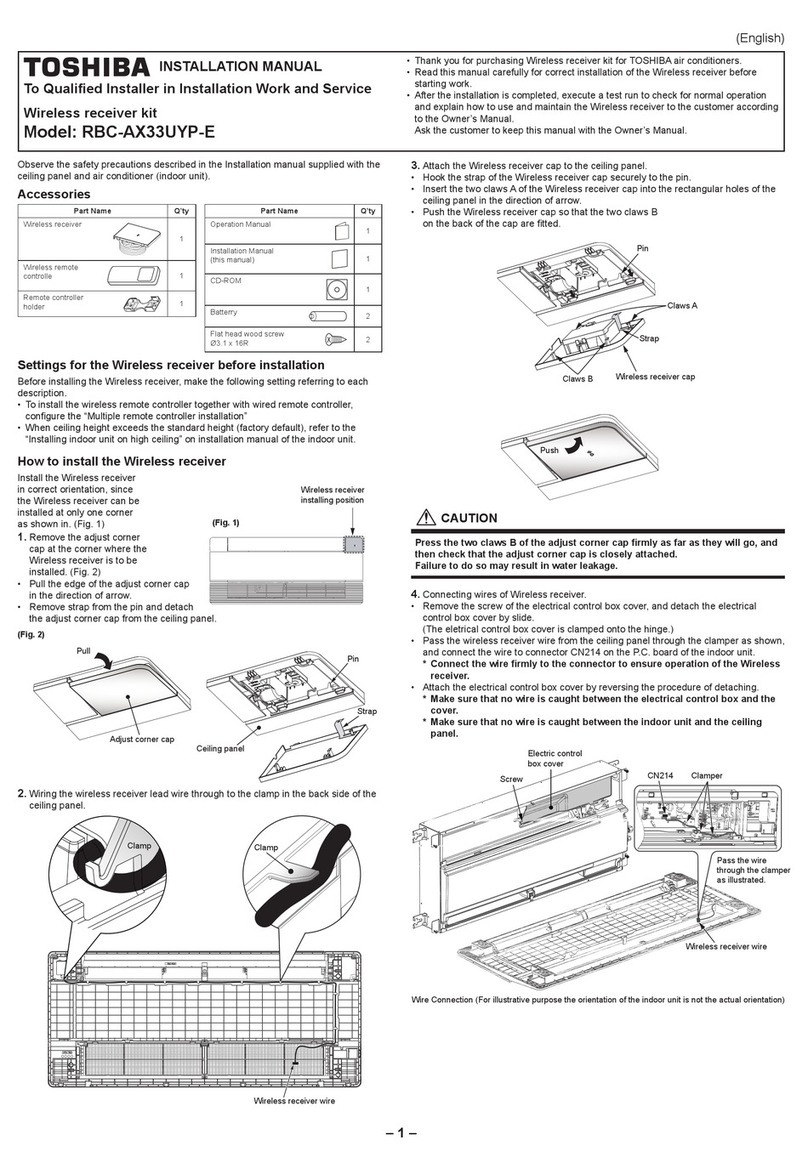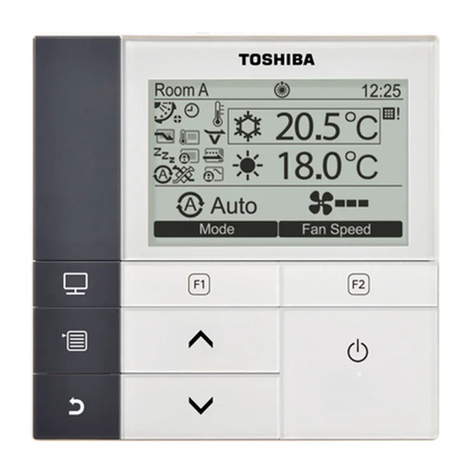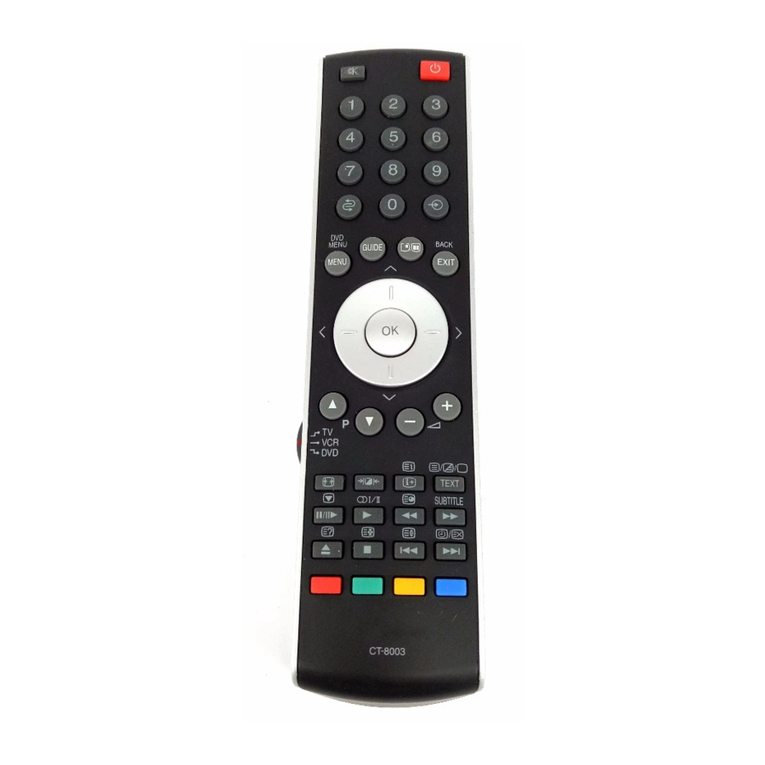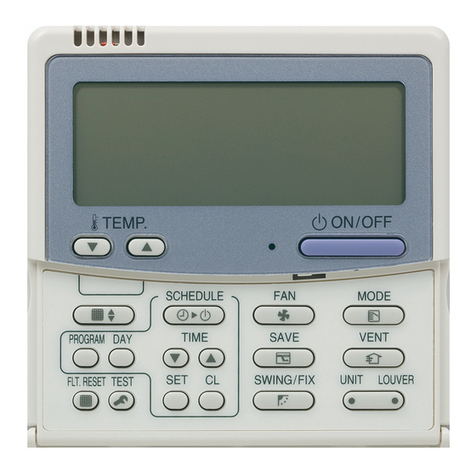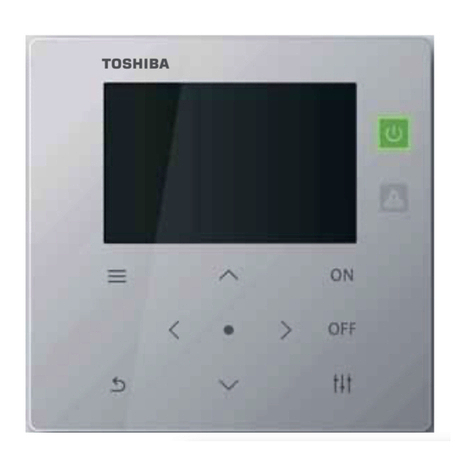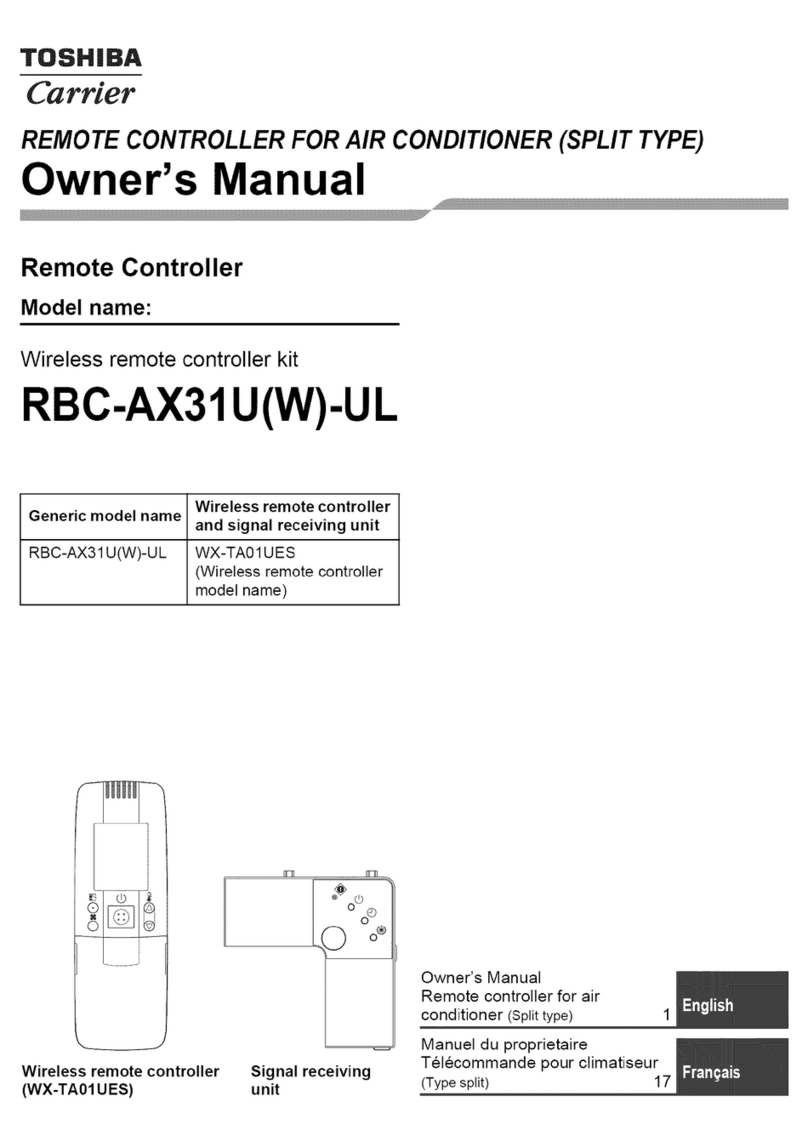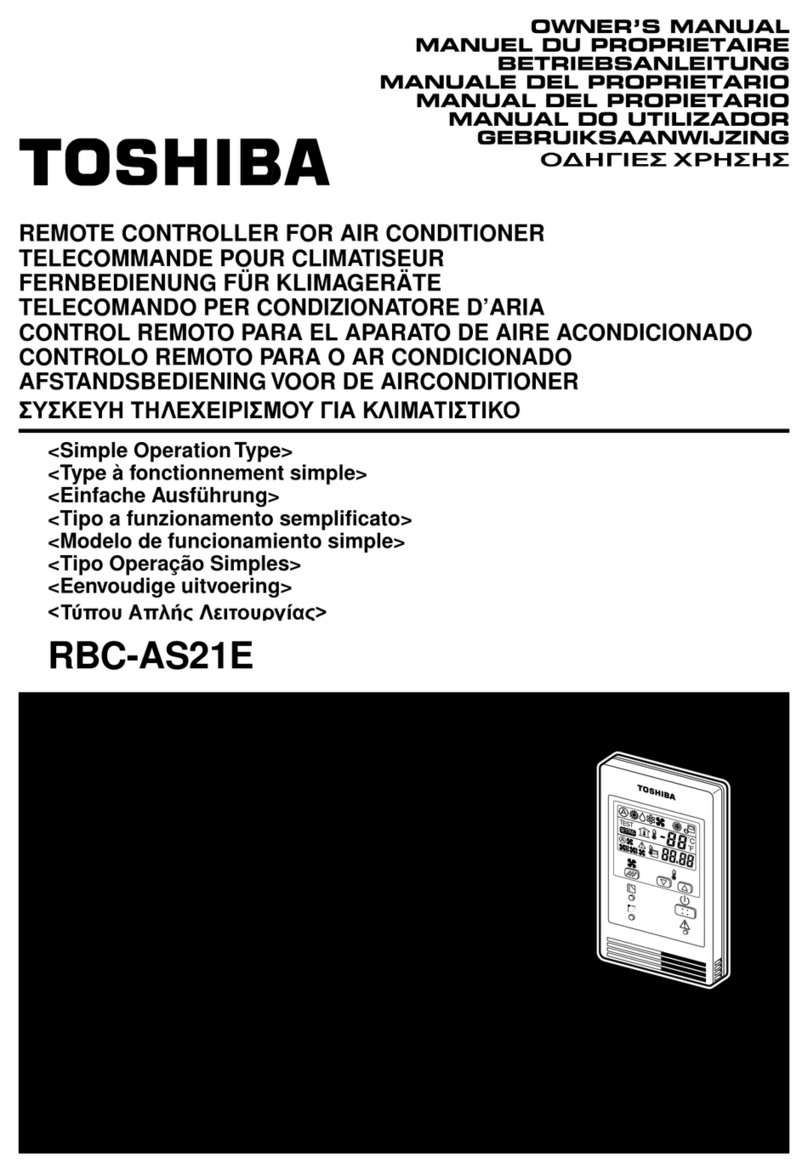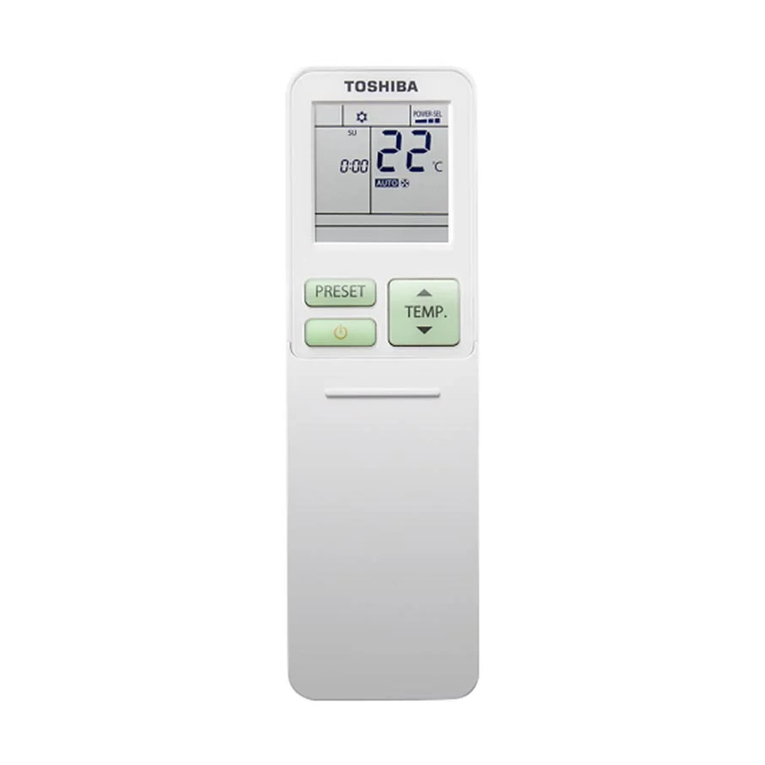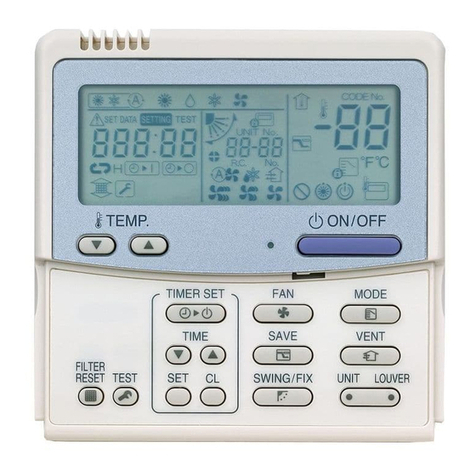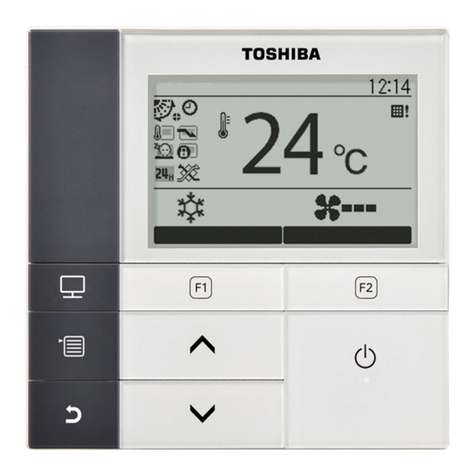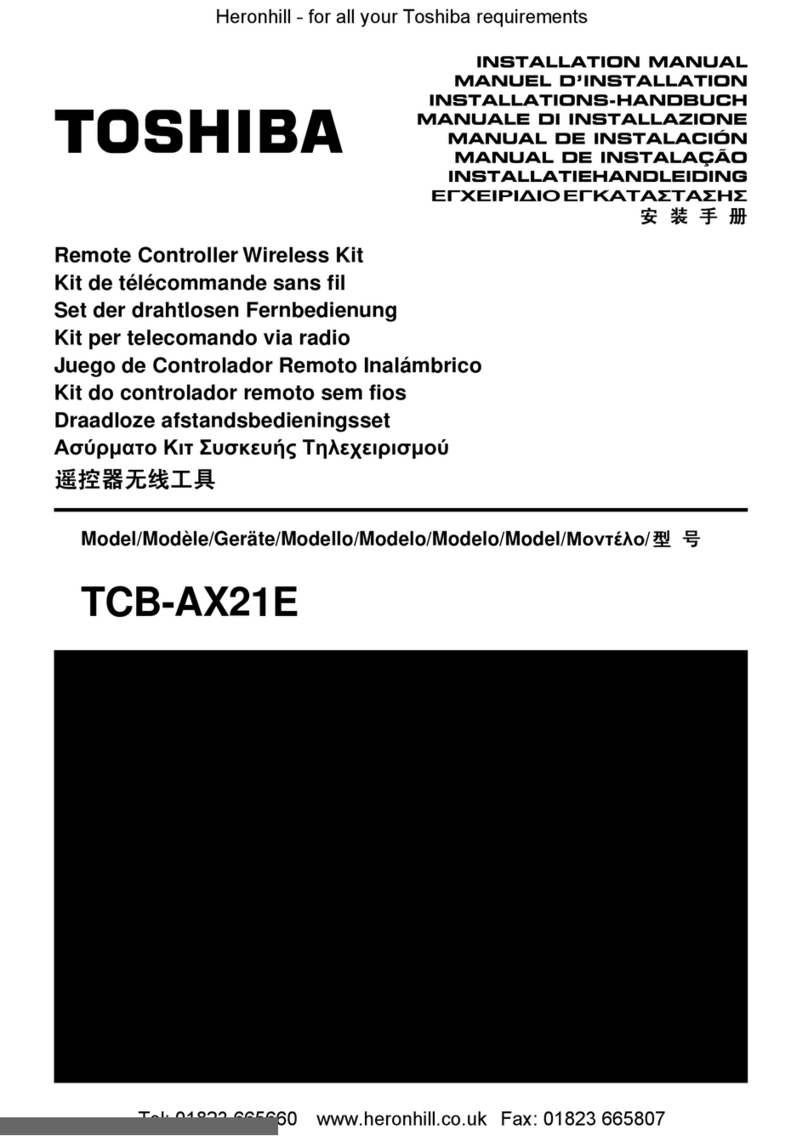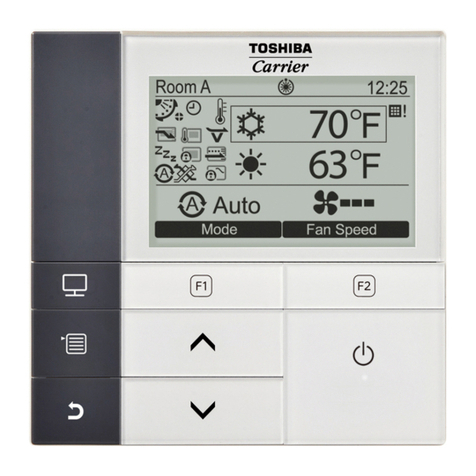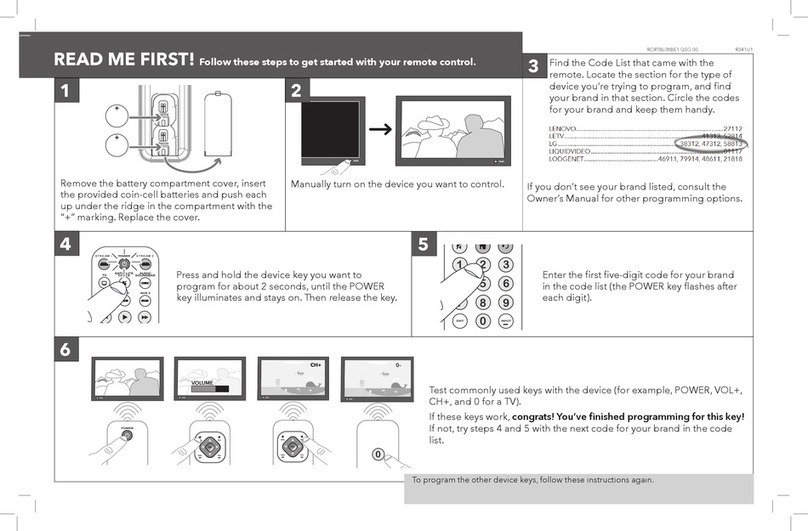
-4-
Switching of temperature sensor
Both the remote controller and the indoor unit
have built-in temperature sensors, and the two
sensors cannot work at the same time.
The temperature sensor in the indoor unit is
the default sensor.
If to switch to the temperature sensor in the
remote controller, slide dial switch 4 on the
remote controller circuit board to the ON position.
Note 1: On the main remote controller, you can
switch to the sensor in the remote controller. (If
the remote controller is a sub remote controller,
it is unable to switch.)
Note 2: When using a separately sold remote
controller sensor, set the sensor inside the
remote controller to OFF.
Requirements
When using the remote controller for the rst
time, the initial operation after power on will
last for a while. This is not a fault.
<Initial turn on time>
Let the remote controller run for about 5 minutes.
<Turn on time after the second turn on>
Let the remote controller run for about 1 minute.
The address setting of the multi-split air
conditioners cannot be completed just by
turning on the power (“SETTING” always
ashes). You must perform the operation on
the outdoor interface circuit board to complete
the address setting. The remote controller
cannot be operated when setting the address.
It takes at most 10 minutes to set the address.
Remote controller test run setup
1. Press the ON/OFF button.
Turn o the air conditioner.
2. Press the timer o button and the “ △”
set button at the same time for at least 10
seconds. The LCD display area shows
“TEST” and becomes test mode.
3. The test run shall be performed in heating
or cooling mode.
• During test run, “TEST” is displayed on
the LCD display.
• When “TEST” is displayed, the
temperature cannot be adjusted.
• During test run, the machine will bear
a considerable load; therefore, it is
advisable not to carry out a test run
unless necessary.
Note 1: After power up, the outdoor unit will not
work within about 3 minutes; otherwise
the operation will stop.
4. After exiting the test run mode, press
the timer o button again to ensure that
“TEST” on the LCD display disappears.(The
remote controller has a 60-minute timer o
function to prevent continuous test run.)
Remote controller DN setting
1. Press the On/O button to shut down the
air conditioner.
2.
Hold down the menu button and the “ ▽”
setting button for at least 10s. The LCD
displays “SETTING” and the lower left
corner displays indoor unit address, e.g. 1-1.
After verifying the address, press the timer
o button to access the DN setting mode.
3. After accessing the DN setting mode, use
the menu keys to switch between DN code
and data. Flashing means editable state.
Use “ △” and “ ▽” for setting. After this
is done, use the timer o button to save
the setting (this step is required for each
setting). After the setting is over, press the
On/O button to exit the DN setting mode.
Note 1: When in the DN setting mode, the fan
of the indoor unit will start working.
Before this, please make sure there
is no foreign matter around the fan
blades that may obstruct their normal
rotation and be cautious.
Remote controller state
monitoring mode
1. Hold down the menu button for 10s (in
either on or o state) to access the remote
controller state monitoring mode.
2. After verifying the address, press the timer
o button to access the state monitoring
mode. Use “ △” and “ ▽”to select the
code to check data.
• Refer to the Installation Manual supplied
with the indoor unit or outdoor unit or
service manual for details about the
check code and data.
3. Press the On/O button to return to the
normal display interface.
EEV2401801
